#european - west asian origin
Text
here's how armand can still be bengali
why do i think so? no other good reason than i am bengali myself and i want armand to be. (also assad zaman's family is from bangladesh. bengali solidarity!!!)
bengal: the region in south asia comprising present-day bangladesh and the indian states of west bengal, odisha, assam and parts of bihar.
armand said in the season one finale, that takes place in 2022, he is a 514 year old vampire. is it 514 years including or excluding his human years? let's go with including. that means armand would have been born in 1508.


now what was going on in india and bengal in 1508? well, the mughals hadn't come to india yet; it's still about two decades before babur makes his way here. delhi was under the rule of the lodi dynasty, the delhi sultanate was in its dying days. most of north india, mainly uttar pradesh and bihar was under the jaunpur sultanate. bengal was still it's own independent kingdom, called the bengal sultanate. alauddin hussain shah had just seized power and become the sultan of bengal in 1494, beginning the hussain shahi dynasty (they ruled in bengal till 1538 when the mughals captured the region).
india as a country did not exist yet. even it's conception would be a few centuries away still. the subcontinent was a collection of big and small kingdoms and sultanates, constantly warring amongst themselves, some ruled by hindu rulers others by muslims, each with their own distinct histories and cultures. bengal was one of the most prosperous and thriving among them. the bangla language and bengali culture was just beginning to develop.


vasco da gama had arrived in india in 1498, landing at kozhikode on the malabar coast. this began the arrival of the portugese in india, and soon other european colonialists followed. they soon set up their capital in goa, built forts all along the western coast and established trade through obtaining licenses and exclusive permits from local rulers. they first made their way to the bay of bengal region around 1516, with the first portugese representative- a guy called joao coelho- coming to chittagong (present day bangladesh). the first factory was set up in chittagong the next year.
the portugese traded in spices and cotton and fruits and muslin and also slaves. the european indian ocean slave trade began with the coming of the portugese in the early 16th century. slavery in south asian societies had obviously existed long before, and it was a deeply complex and diverse system of dependency and regimes of slavery. slavery of youth and children was also pretty prevalent: it would not be uncommon for poor, farming families to sell away themselves or their children to zamindars (landlords) and colonial overlords in desperation. there were many, many cases of young children being forced to get onboard ships where they'd be held agains their will and taken to europe, the americas or south-east asia. goa and lisbon were the two cities that linked the movement of goods and people between the indian and atlantic oceans, but goa wasn't the only place where enslaved children were traded in portugese india nor lisbon the only european they were taken to.
one of those kids might as well have been arun.


i know the brief glimpse at the talamasca files showed armand's origin to be in delhi but in this particular scene he clearly says that he was sent *to* delhi, thinking he was going to work on a merchant boat.
this is just a theory i have btw. armand could've been from maharastra or the deccan as well idk. anyway.
armand is a monster, a vicious, villanious creature of unfathomable powers and ferocity. but he is also so deeply tragic. he had been forcibly torn away from his people and his land. he has no memory of his family or his humanity. he has lived for over half a millenium. the india he might've known hasn't existed for centuries, and he never got to know the one that exists today. the bangla he might've spoken no one remembers anymore. he has nothing left of the human he was except that name.
further readings (STRONGLY SUGGESTED!!!):
245 notes
·
View notes
Note
There's been a lot of talk over the years about whether Ferengi are a antisemitic stereotyoe. Given that DS9 had more Jewish actors and creative staff, what do you think of that discourse?
Was this something that was kept in mind when reinventing the Ferengi from how they were in TNG?
I can tell you the INTENTION of the Ferengi was to satirize capitalism and the West. Ferengi derives from the Persian "Farangi," i.e. Franks, people from France. More broadly, it came to mean "Western European." Hence "Farangistan" = Europe. Farang/i spread to other languages, notably Thai where it now means "foreigner."
Farang - Wikipedia
So, the Ferengi are intended to be us. Westerners, even more specifically Americans. The original TNG bible compares them to 18th and 19th century Yankee traders. Sexist and greedy, patriarchal and dishonest.
I'm pretty sure this was the intention of their look too, especially the noses. Big noses are common in Asian caricatures of Westerners. Check out the Thai sculpture in the link above. According to my father, for example, the Rhade tribe from the Vietnamese Highlands called Americans "big noses" and when he was their military advisor, he was Captain Big Nose.
And then TNG cast a ton of Jewish actors as early Ferengi, and a lot of people saw them completely differently. (Aside, I've heard from some Asian fans that they perceive Ferengi as caricatures of the Cantonese, which speaks to how different cultures see them.)
We were definitely aware of this issue when DS9 came along, and I largely followed the lead of our Jewish-American showrunners on how to handle it. Generally, by digging deep into three different main Ferengi characters and several recurring, I hope we transcended the stereotypes.
We showed Ferengi not as whip-wielding pirate/raiders (not a Jewish trope btw, see Yankee traders), but as a small business owner, a handyman/engineer, and an aspiring Starfleet officer, all struggling with issues of cultural assimilation and grappling with their own culture's shortcomings when it comes to women and greed.
When writing the Ferengi, I drew from my own (white bread, Catholic, Army brat) background, so for example, I saw the Rules of Acquisition not as some kind of take on the Talmud, but as a satire of Western self-help business books, a kind of "How to Win Friends and Influence People," meets "The Devil's Dictionary." The Ferengi afterlife is based on my vague understanding of Chinese traditions I grew up around in San Francisco, etc.
I'm not sure we fully separated the Ferengi from the baggage they came to us with, but we definitely tried.
#star trek deep space nine#star trek ds9#star trek deep space 9#deep space nine#ds9#deep space 9#star trek#ferengi#ask me anything#ask me stuff#tvwriting#tv writing
3K notes
·
View notes
Text
Happy Dracones Monday! Firedrakes!

Happy Dracones Monday! This Monday we're looking at four dragon species at once, the firedrakes! Here they are, approximately to scale with eachother.
The glitterdrake is the smallest, the size of a large lizard or small cat. They live in laurel forests on Macaronesian Islands, in the Atlantic near Africa. Glitterdrakes aren't based on mythology; I put them on Macaronesia because I couldn't find Macaronesian dragon mythology but I am trying to put dragons EVERYWHERE on the map. Also, putting these dragons on an archipelago of islands means I can have a lot of island subspecies and colour morphs - glitterdrakes represent colourful fantasy dragons, so having them come in every colour (sapphire blue, ruby red, emerald green, royal purple, burning gold, shining silver etc.) was important to me.
The Welsh dragon is smaller than the other European firedrakes at 1.5 meters. They are no less fierce - there aren't any common firedrakes in Wales as a common firedrake cannot maintain a territory there for long. Originally I had the Welsh dragon as a subspecies of the common firedrake, but decided that this dragon had so much personality and folklore that it could get it's own chapter.
The common firedrake is found in Western Europe, 4m long. When designing these I noticed in a lot of heraldry dragons don't seem to have horns? Ears yes, but hornless? Also I noticed that dragons in heraldry tend to have the dorsal finlets from the back of the head to between their shoulders, but no further, which is something I have kept for all my firedrake species.
The viridian firedrake is the largest firedrake species, over 5m long. They are found in Eastern and Southern Europe, and in Russia. I based their appearance on old storybook illustrations to make them look very 'classic', which is why they have horns and cheek frills compared to the more heraldic and hornless common firedrake.
Rant about the term 'firedrake' under the cut! :)
In other creative works, these are called 'classic dragons', 'European dragons', 'true dragons' and 'Western dragons', but I am not a fan of these terms - 'true dragon' implies other dragons are untrue dragons, which is nonsense. 'Western dragon' or 'European dragon' is largely accurate (the 4 legged 2 winged dragon design is common in Europe and the West) but there are other Western and European dragons (wyrms and wyverns) and I find these terms confusing when other types of dragons are taken into account. Also, some Asian dragons also have 4 legs and 2 wings. 'Classic' dragons... serpentine and wyrmish dragons are more classic than 4 legged 2 winged firebreathers, etc.
I went with 'firedrake' as a term for these dragons because 'drake', 'drachen', 'ddraig', 'drac', 'drak' and 'dreki' are all words for dragons like this in European languages, and because firedrake is a word used in literature like some translations of Beowulf and, of course, Tolkien's Legendarium (firedrake comes from Old English fȳrdraca). I think it's a good word that easily conjures up fire breathing four legged, two winged dragons without making them more 'true' or 'classic' than other dragon types or tying them specifically to 'European' and 'Western' countries.
In Dracones Mundi I really try to get a huge diversity of dragons across to the readers. There are around 68 dragon species in this project, only 4 of which are firedrakes. I want to show readers there is more to dragon mythology than "here is a western dragon, they are evil and associated with fire, here is an eastern dragon, they are good and associated with water" - I want to dig deeper. I want people to know about azhdarha, about cuélebres, about coameh. So I'm shining the spotlight away from these firedrakes and trying to make them a small part of a much larger discussion. :)
#Dracones Mundi#Dracones Monday#Firedrakes#Dragons#Schedulling firedrake post for the monday before the firedrake plushies restock on friday hehe#Firedrake plushies found on Barksbog website on Friday 24th May 2024
210 notes
·
View notes
Text
Is BL Being Overly Influenced by Modern Western Romance Tropes?
Short answer: No. anyways, in the following essay I will explain that James Cameron is a weeb...
(okay fine~~ lets actually do this)
TLDR: discussing what media globalization is, how fandom can distill it down to only American/European cinema, showcasing how a lot of current BL is influenced by countries within it's own proximity and NOT "the west" but each other, also James Cameron is still a weeb
I had seen a post that basically proposited that BL was being influenced by modern western romance tropes and had used things like omegaverse and mafia settings as an example. I found this, in a word, fucking annoying (oh, two words I guess) because it's micro-xenophobic to me.
It positions western - and really what we mean by this is American/European countries, we're not talking about South American countries are we? - cinema as the central breadbasket of all cinema in and of itself. Inherently, all following cinema must be in some way, shape, or form, influenced by American/European standards, and as such America/European countries are directly responsible for cinema everywhere else, and these places - namely non-white countries - do not influence each other, nor have their own histories in regards to storytelling or cinema and do not, in turn, also influence American/European film making either.
Now like, do I think all of that~~ is intentionally malicious thinking on behalf of folks in fandom? No, so chill out.
I do, however, think a lot of it is birthed from simple ignorance and growing up in an environment where ~The West~ is propagated to be central, individual, and exceptional as opposed to the monolith of "Asia" - by which we mean China, Korea, Japan don't we? How often in discussions of Asian countries is Iran, India, or Saudi Arabia brought up even tho they are all Asian countries? - or the monolith that is South America - in which some folks might believe regions like the Caribbean and/or Central America belong to, but nope there both North America.
Anyway, what we're talking about here is the concept of "media globalization":
"The production, distribution, and consumption of media products on a global scale, facilitating the exchange and diffusion of ideas cross-culturally." (source)
"The media industry is, in many ways, perfect for globalization, or the spread of global trade without regard for traditional political borders. [...] the low marginal costs of media mean that reaching a wider market creates much larger profit margins for media companies. [...] Media is largely a cultural product, and the transfer of such a product is likely to have an influence on the recipient’s culture." (source)
Typically when I see fandom discussing what falls under MG the topic is usually focused on how "the west" is influencing Thai/Korean/Chinese/Japanese media.
Enter, Pit Babe.
Surely Pit Babe was influenced by Supernatural right? Omegaverse is huge in the west - love it, hate it, meh it - it originated in the west - specifically via Supernatural after all.
Nah.
Omegaverse has been popular in Japan and China for almost a decade, if not longer. The earliest omegaverse manga I can think of is Pendulum: Juujin Omegaverse by Hana Hasumi which was released in 2015, almost a decade ago.
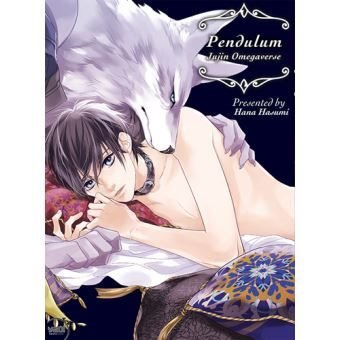
(what if you added furries into omegaverse? WHAT IF?? - Japan)
There's countless popular omegaverse manga too, and the dynamics only moderately resemble the ones we're familiar with in the west. Juujin is part omegaverse and part furry/beastmen - the alphas are all beastmen the omegas are humans - while something like Ookami-kun Is Not Scary only slightly resembles omegaverse dynamics as a hybrid series - beastmen are really popular in Japan in part b/c of historical mythology (you see the combination of romantic Beastmen and Japanese culture & folklore in Mamoru Hosoda's work The Boy and the Beast and Wolf Children).
Megumi & Tsugumi (2018) is so popular they're an official English edition published by VIZ's imprint SuBlime and that's a straight up omegaverse story.

(look at the omega symbol on the cover loud and proud baby)
So if Pit Babe was influenced by anything, it certainly wasn't "the west" it was Japan, Korea and China. Because those countries have a thriving omegaverse sub-genre going and have had such for 10 plus years now. Supernatural is popular in Japan, yes, and that may be where Japan and Japanese fans originally found omegaverse as a fictional sub-genre.
HOWEVER
Japanese fans took the sub-genre, bent it, played with it, and evolved it into their own thing. As such, other countries in their proximity, like Thailand, China, and Korea who read BL and GL manga, found it and were like "hey, we wanna play too!"

(is that an omegaverse yuri novel I spy?? yes, yes it is)
When I watched the Red Peafowl trailer, it had more in common with Kinnporsche, History: Trapped, along with films and shows like: Jet Li's The Enforcer, and Fist of Legend, Donnie Yen's Flash Point, Raging Fire, and Kung Fu Jungle, Han Dong-wook's The Worst of Evil, Kim Jin-Min's My Name, Lee Chung-hyeon's The Ballerina, Baik's Believer & Believer 2, Yoshie Kaoruhara's KeixYaku, popular Don Lee films The Gangster, the Cop and the Devil and Unstoppable alongside BL manga like Honto Yajuu and Bi No Isu (probably one of the most well known yazuka manga to date).
youtube
youtube
youtube
Like, we're seeing a rise in mafia based BLs and people think that's because of "western influence" and not the absolute insane success of kinnporsche??? Especially in countries like China, Korea, Taiwan, Philippines and other Asian countries???
Mafia films and gang shows aren't even that popular here in America/Europe; don't get me wrong, they still get made and exist, but the last full length film was The Irishman which did not make it's budget back, and while Power is still on-going it's not a smash hit either. The heyday of Breaking Bad, The Sopranos, The Wire, Goodfellas, and Scarface are long gone. And if you've watched any those shows or films they have very little in common with Kei x Yaku, Kinnporsche, or Red Peafowl in tone, or style.
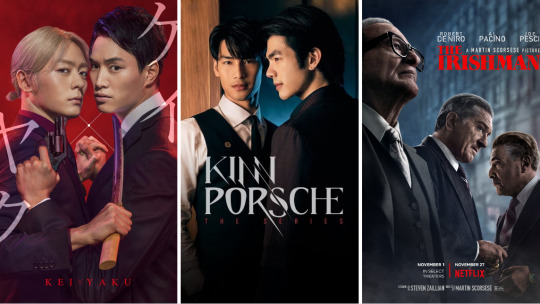
(who knew martin just wanted to make his al pacino/robert de niro fanfic come to life all these years?)
Another example, The Sign, which is clearly taking inspiration from Chinese costume dramas: Ashes of Love, Fairy and Devil, White Snake (and it's many adaptions), Guardian, & Ying Yang Master Dream of Eternity. Alongside Hong Kong and Korean cop and romance shows like Tale of the Nine-Tailed, Hotel Del Luna, Director Who Buys Me Dinner, First Love, Again, and previously mentioned cop dramas.
youtube
youtube
youtube
Like, I know y'all don't think Twins is influenced by, what, American sports classic Angels in the Outfield?? Gridiron Gang?? Rocky?? Nah that shit is inspired by the popularity of sports manga like Haikyuu!!, Slam Dunk, Prince of Tennis (which even has a Chinese drama adaption), and the like. And also probably History 2, & Not Me but I'm like 87% sure Twins is just Haikyuu fanfic.
So like, does this mean that there's NO history in which American and European cinema influenced these countries? What, no, obviously that's not true, American/European totally have had media influence on countries like Korea, Japan, etc.
Astro Boy by Osamu Tezuka considered "the father of manga" was inspired by Walt Disney's work on Bambi. Another more recent and prominent example is director Yeon Sang-ho and his film Train to Busan.
"And it was Snyder’s movie [Dawn of the Dead, 2004], not the 1978 original, that filmmaker Yeon Sang-ho recalled as his first encounter with the undead. “That was when I started my interest in zombies,” Yeon said, in an email interview through a translator from South Korea. Even today, he added, “it’s the most memorable and intense zombie movie I’ve ever seen.”" (source)
HOWEVER, the global influence doesn't stop there. It's not a one-way street. Yeon Sang-Ho was inspired by Zack Synder's Dawn of the Dead, a remake of George Romero's own work, but Yeon Sang-Ho's work has inspired countless Korean film makers to make their own zombie media; following Train to Busan there's been: Kingdom (2019 - current), All of Us Are Dead (2022), Zombie Detective (2020), Zombieverse (2023), Alive (2020), Rampant (2018).
And hey, wouldn't you know it now we're starting to see more zombie media coming out of places like Japan (Zom 100 the manga, movie, and anime) and High School of the Dead.
Do you know what Domundi's series Zombivor (2023, pilot trailer only) reminds me of? It's NOT The Walking Dead (which is the only relevant zombie media America has created in the last decade) it's Korea's All of Us Are Dead (2022). Comparing the trailers, the settings, the tone, it's clear where Zombivor is pulling inspiration from: Korean zombie cinema. NOT American zombie cinema.
youtube
youtube
youtube
In fact a lot of Domundi's shows - Cutie Pie, Middleman's Love, Naughty Babe, Bed Friend - are all very clearly inspired by Korean filmmaking, specifically that of romantic kdramas from the 2016 - 2020 era. Not always in story, but rather in technique.
This is media globalization. It's not simply ~The West~ influencing non-American/European countries but countries who are often more close in terms of: proximity, culture, and trade are going to have more influence on each other.
It is far more likely that Aoftion (Naughty Babe, Cutie Pie, Zombivor) was influenced by watching Train to Busan, All of Us Are Dead, and other Korean zombie shows and films than a single episode of Walking Dead.
My point isn't that this goes one way only, but rather it is very literally a global thing. This includes American and European film makers being influenced by non-American and European cinema.
Martin Scorsese, Steven Spielberg, Darren Aronofsky, Christopher Nolan, the Wachowski sisters, George Lucas and James Cameron have all been influenced by Japanese film making, especially the works of Akira Kurosawa, Satoshi Kon, and Mamoru Oshii.

John Wick's entire gun-fu sub-genre is heavily influenced by classic Hong Kong action films, specifically John Woo films. Legend of Korra, The Boondocks, Voltron, Young Justice, My Adventures with Superman are all obviously inspired by Japanese anime but animated by a Korean animation studio (Studio Mir). Beyond that, the rise in adult animated dramas like Castlevania, Critical Role Vox Machina, and Invincible to name a few are very clearly taking inspiration from anime in terms of style. The weebs that were watching Adult Swim's Inuyasha, Bleach, and Dragon Ball Z have grown up and are now working in Hollywood.
Okay so like, what's the point of all this? What's the issue? Since American/European cinema does influence et all cinema does any of this really matter?
YES.
I take contention with this line of thinking because it centers "the west" and our supposed individual importance way to much. Declaring definitively that "BL is being influenced by western tropes" and then including tropes, narratives, and film making styles that aren't inherently western and actually have major roots in the cinema of various Asian countries, removes the existence of individual history these countries have which are rich, varied, and nuanced. It removes the "global" part of globalization by declaring "the globe" is really just America and Europe.
It distills these countries down to static places that only exist when American/European audiences discover them.
BL doesn't exist in a vacuum you can trace the development of Korean BL to the development of Korean het dramas almost to a T. You can also trace their development to the queer history of each country and how Thailand interacts culturally with China, Japan, Korea, etc and vice versa. It also ignores the history of these countries influencing American cinema as well. Don't mistake "the globe" for only your sphere of experience.
Anyway James Cameron is a damn weeb y'all have a good night.
Check out other posts in the series:
Film Making? In My BL? - The Sign ep01 Edition | Aspect Ratio in Love for Love's Sake | Cinematography in My BL - Our Skyy2 vs kinnporsche, 2gether vs semantic error, 1000 Stars vs The Sign | How The Sign Uses CGI | Is BL Being Overly Influenced by Modern Western Romance Tropes?
[like these posts? drop me a couple pennies on ko-fi]
#kinnporsche#pit babe the series#the sign the series#twins the series#red peafowl the series#domundi#gmmtv#chaos pikachu speaks#fucking a this was an entire essay#i should drop a ko-fi link cause good god damn#chaos pikachu metas#Youtube#pikachu's bl film series
300 notes
·
View notes
Text
Notes on a South Asian Tropical Cyrodiil (and more!)
So, many TES fans know that before Oblivion, Cyrodiil was supposed to be tropical. The most striking phrase to describe it, "most is endelss jungle", says it all. The quick and snarky explanation is that Todd Howard watched LOTR, was "inspired" by it, and that's why everything in Oblivion looks sort of like a Rennaisance Fair. In any case, I think it was a huge missed opportunity, especially in a world where most popular fantasy is European inspired, to have replaced what could have been very cool tropical enviroments with what is frankly a lame "Talos used his magic" lore retcon. You can read the 1st edition of the Pocket Guide to the Empire to see what we missed.
But it's not only Cyrodiil which we missed this way… Tamriel just makes more sense as a tropical continent. While the size and the exact location of the continent is discussed by nerdier nerds than me, I think it does make sense like this, and not only that, we have a very interesting world parallel to compare it to: India. From a tropical rainy south to the cold mountains of Skyrim, Tamriel is surprisingly similar to the Indian subcontinent, and many of its geographical quirks can be explained if, instead of assuming a temperate Cyrodiil, we go all out with that concept. This is going to be a long post, you have been warned.
So with that in mind, I'll try to make a not-so brief tour (with some evocative pictures along the way) of a rebuilt tropical Tamriel, following the rains of the moonson:
The position of Tamriel, in this case, would be roughly where the Indian subcontinent is located in real life, that is again, tropical, stretching the Tropic of Cancer (is there a name for the tropics of Nirn? Interesting to think about) Here, we see our numbers pan out well: Tamriel is mentioned to be between 4000 and 3000km across east to west and 2000 and 3000km south to north. VERY, VERY roughly, there is 4000km between Pakistan and Myanmar, and 3000km from Sri Lanka to the northern tip of Tibet. Plot that on a map, and you already can see some coincidences. Now, this is a rather average continent, not Pangea sized like some imagine Tamriel to be. This does help explain why, for example, the interior of Cyrodiil is rainy and good for agriculture instead of a desert. But it also means that it's very likely that Tamriel is ruled by monsoons. Monsoons are complex, but they basically form when there are plenty of warm places for water to evaporate (the South Indian ocean), and mountains that block cool winds from the opposite direction (the Himalayas). We have a very similar situation here, with a mountainous Skyrim on the north of a tropical Cyrodiil facing an equatorial southern ocean. So, what happens are monsoons, perhaps not as strong as IRL India, but carrying rains very deep into the continent. This would feed the rivers and the rich agricultural areas of Cyrodiil, and would have some other consequences.
So let's imagine our trip South to North. In the South, in Black Marsh, Blackwood and Lleyawiin, and Pellentine (southern Elsweyr) we would find, much like in the original lore, humid tropical climates, jungle, wetlands, and my favorite, mangrooves. I would expect mangrooves to stretch in this whole area, across rivers. In fact, one of the reasons why Black Marsh could be so hard to explore and control by the Empires at Cyrodiil would be the presence of thick mangrooves all over its coast. This is the region of Cyrodiil that would most resemble "endless jungle".
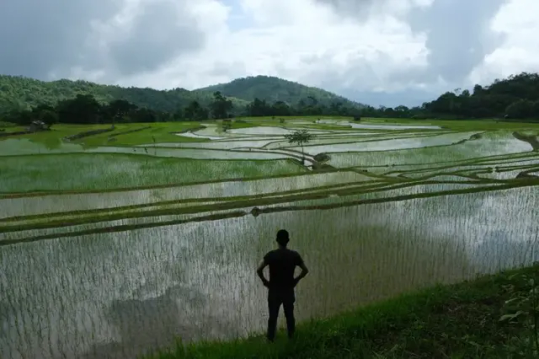
(Rice fields in India, what I imagine most of this Tropical Cyrodiil would look like)
However, as any lore person knows, Anequina, northern Elsweyr, is arid desert. Does this mean a contradiction? Far from it, we have a similar example in IRL India: the Deccan Plateau, which has a semi-arid to arid climate. This can be easily explained by higher elevations up to a small mountain chain separating it from Cyrodiil to the north, and the fact that little rain would reach behind this "Anequina Plateau" would make the region of Kvatch and Anvil more dry much like in canon, in this case, more scrublike. This highland desert would not be as harsh as Elsweyr is usually concieved, maybe, but its driest regions might justify places such as Dune. (On that matter, it always bothered me to read about the "cities" of southern Elsweyr and there being only two or three there. If I had to redesign it, I would move some from the north to the south).

(the Deccan Plateau in India, it gets greener or drier according to the monsoon)
Keeping on our tour of Tamriel, the Topal Bay and the very rainy Black Marsh funnels the rainy monsoon from the south towards central Cyrodiil. Here we find the endless jungle of the Nibenay Valley. But unlike the rainforests of Elsweyr and Black Marsh, these dense forests and rich river plains are mediated by the monsoon winds, with dry seasons alternating with copious rain. This has huge effects on agriculture and culture in general, as agriculture is defined by the rythms of the rain. Keeping with our South Asian theme and the 1st edition of the Guide to the Empire, Cyrodiil would have huge extensions of rice paddies, as well as terrace farming and much hardier crops in the highlands, instead of the… well, almost absent agriculture we saw in Oblivion. The food, clothing, architecture and overall culture of Cyrodiil would be very different with this. The original Pocket Guide said some of its main exports besides rice and fruit are moon sugar and silk. Moon sugar in Cyrodiil, can you believe it?
Another thing I imagine Cyrodiil would be famous for would be fish and seafood, well, river food. Rice plantations can host fishes and crustaceans to get some extra protein, and well, what about mudcrabs? Hell, as preparing muddy soil is vital for rice cultivation, no wonder mudcrabs are considered a nuisance. Imagining critters in gameplay in such an enviroment also makes my mind roam. Tigers, elephants, rhinoceros, and this is not even getting into the more mythical creatures you could find, instead of endless wolves… Rice cultivation is also more labor intensive than other crops, and it also has a deep impact on the terrain, "terraforming" so to say, huge expanses into paddies and terrace farms. This level of cultivation also requires an established infraestructure of irrigation. While this does not necessarily means a centralized goverment, as farmers can build it and maintain it by themselves, the rise of an empire, i.e., the Empire, will also increase the complexity of these systems, adding canals, dams, reservoirs and more ambitious projects, like we see in India and China. I am sure some people more knowledgeable about those cultures can comment more.
While this Cyrodiil is a tropical/subtropical region covered in "endless jungle", some parts might indeed resemble the rolling hills and grasslands you see in Oblivion. Deforesting jungle for pasture is something very common around the world (some have joked this mass deforestation was later in canon explained as a gift from Talos lol) and you can see the results, like in tropical Australia and my closer Mata Atlantica, do superficially resemble temperate pastures in say, Europe. Until you notice the palm trees, of course. But yes, I can see the Nords being a mostly herding people (more on that below) bringing their sheep and cows to the tropical lowlands and, well, deforesting to make space for them.
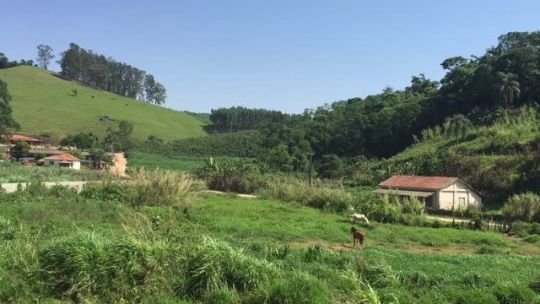
(ranches in Sao Paulo state, Brazil, notice the palm trees)
Imperial City just so happens to be built in an island in the middle of several river crossings, in what seems to be a swampland. The first thing that came to mind when I read that was Tenochtitlán. The districts of Imperial City would have been built over the centuries on artificial islands on a shallow lake, using plentiful mud and organic matter to make fertile chinampas. I believe this would make for a striking sight. Instead of just a city in the middle of a empty island, you would see the White-Gold tower and the rest of Imperial City rising from Lake Rumare, surrounded by rich farmland and its districts joined by walkways. (much like the old descriptions, actually, could you believe I wrote that without reading them?)

(Reconstruction of Tenochtitlán... and I just noticed, it's surrounded by (volcanic) mountains too, much like Imperial City)
Much like the Pantanal is one of the sources to the Paraguay River (which merges with the Paraná and then the Río de la Plata) IRL, here, the swamps of central Cyrodiil would be the source of the Niben. This does raise an interesting question, where is the source of the Niben? Is it Lake Rumare? No, I believe it would be several smaller rivers all the way from Bruma and even Skyrim. These small, violent mountain rivers eventually flow into the Rumare wetlands and only THEN in the placid great Niben. You DON'T want to be caught in one of the mountain valleys in rainy season. This does raise the question; won't the developments upriver, like Imperial City itself and the surrounding farmland, affect the course of the river downwards? There's plenty of water from the rain, but a more developed Cyrodiil might indeed have to grapple with this, supposing, for example, they manage to dam the river.
Looking west, we got the Colovian region, said to be composed of drier highlands and cliffs in the early Pocket Guide. Probably cut from the rain because of the Anequina Plateau, this is indeed more arid or "mediterranean", though I actually see it as more Australian. Maybe some of the drier parts near Hammerfell, resembling Argentine Cuyo and the northwest, would be a distant cry from the wetlands, having thorny dry forests and dry valleys, where yes, you could plant wine. The wetter cloud forests (much like the Yungas in South America, the place where the rain reaches last) could maybe be the home of the last pre-Imperial cultures of Cyrodiil. Fascinating places.

(Jujuy, Argentina. Just *near* are the Yungas cloud forests, where the last rains from the Atlantic meet the Andes, making for some AMAZING places)
Given that I mentioned enviroments near to/on the Andes IRL, let's talk about potatoes. Potatoes are unique crops, because they are the only ones who offer such calories and also be planted in cold enviroments like Europe. Or Skyrim. The discovery and spread of potatoes would cause demographic shifts on people living in cold areas. And they also originated in a unique enivorment IRL: the Andes, actually with possible hybridization from the Magallenic foresWHAT I MEAN, is that potatoes are very important and have been domesticated in very specific conditions. The Wroghtgarian Mountains would seem like a perfect equivalent of the Andes at the first glance, but they would be very different. The Andes, located between the Pacific Ocean and the greater Amazonian region, are very, very unique enviroments. These mountains, however, are in between inner seas. Something like the Atlas or the Alps? In any case, if there is some people who would appreciate hardy tubers that can grow in mountainous places, they are for sure the Orcs, or perhaps the Reachmen. Maybe an hybridization even between them?
This returns me back to Bruma and Skyrim. Some people (who make those excellent Oblivion mods) imagine Bruma with a Tibetan flavor. Personally, I imagine it more like Pakistan or Afghanistan, with lots of mesas and plateaus and valleys. It would look dry and rocky with some very fertile valleys by snowmelt, but it would look like a snowy wonderland on winter, indeed, Pakistan and Afghanistan are very snowy. Eventually, of course, ending up in the great barrier of the Jerall mountains and finally, Skyrim.

(the Alps? Skyrim? No, this is Kashmir on winter!)
In this scenario, Skyrim would be a quite dry place… or would it? There is no need for the Jeralls to be a straight line of peaks like the Himalayas. They could be a more "broken" series of mountains, like the southern Andes, but in any case, the rain from the south would clash into the higher mountains. Indeed, that is what actually happens in the Himalayas, the foothills of the Himalayas are some of the rainest places IN THE WORLD. These small valleys are something very unique and not very well known part of the world IRL. I can imagine the Skyrim equivalent would be as unique too, hard to navigate and live in. The forests of the Rift and Falkreath would be mazes of windy forests valleys, each with their own unique secrets under a perpetual fog and drizzle. This is a very interesting enviroment to imagine, where again, some of the older cultures of Tamriel could still live.
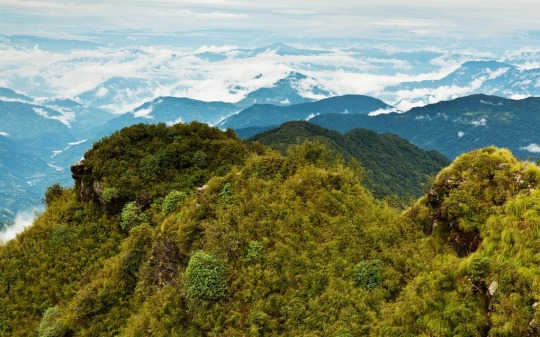
(forests of Bhutan, note how the humid valleys stretch into the distance before the cold Himalayas begin)
However, what does Skyrim look like once you cross the border with Ralof? I imagine some sort of more fertile Tibet, not as high as the Tibetan plateau, allowing for forest and alpine tundra. This is mostly because, while Skyrim is high up, I don't imagine as a plateau, but rather a series of broken mountains like the North American Rockies, which makes sense when you account for all the volcanic activity (there is another super-volcano down in Skyrim but nobody notices). I imagine that Skyrim would be a primarily herding pastoral land before the introduction of hardier crops such as potatoes, and even then. Nord culture would be very interesting reimagined like this; hillforts guarding herds of sheep and cows. It would also create a clash between the very, very agrarian south and the nomadic herding north, with High Rock and Hammerfell a gradient between the two.
I decide I will stop here, I haven't even touched Valenwood (though its subtropical forest seems rather coherent to me), High Rock (the most boring part of Tamriel IMO), Hammerfell, Summerset Islands (if you don't have tropical elves in your setting, you're a coward), or whatever the hell is going on Morrowind. But I hope you enjoyed this worldbuilding exercise and how to make sense of Tamriel's crazy geography. Next time, I'll try to play with tectonics and see if we can make it even more interesting.
But here we enter a problem; if we are operating on a level where Cyrodiil is roughly at the same latitude of India, wouldn't that make Skyrim too far from the poles to allow its tundra like climate, even with elevation? No doubt. Tibet is only as cold as it is because it's the roof of the world and far from any ocean. The northernmost tip Skyrim, like Tibet, would be at the latitude of Turkey, Korea or California, which can get quite cold, but not to the level of what we see on Winterhold or Dawnstar (Solitude sounds familiar, though). What's more, having an ocean up north would only moderate the temperature. Cool currents often don't bring cold per-se, just decrease rainfall. This would end with a very temperate and pleasant Skyrim instead of tundra. Which is on its own, interesting to explore.
Could Nirn be going through an ice age, like it's implied with the dissapearance of Atmora? Possibly, but it would imply revising everything I said before, as ice ages decrease rainfall and mess up with weather patterns all over the world. A colder Nirn would explain a lot, though.
If you liked what you read and would like more worldbuilding, consider tipping me on Ko-Fi and send me stuff to talk about, or just send an ask! I'm the kind of guy who reads encyclopedias and RPG manuals for fun, so I have plenty to talk about about everything from fantasy to science fiction to speculative evolution and alternate history!
#worldbuilding#tes#elder scrolls#skyrim#oblivion#the 'do more tropical worldbuilding you eurocentric cowards' agenda#fantasy#cosas mias
286 notes
·
View notes
Note
I'm still peeved to the fucking moon and back that people legit feels like it's controversial to say "I wish we'd focus on NON-white fairytales when starring POC, because other cultures that Europen ones exist." and "It's annoying that already existing fairytales redone despite still holding up, to be an expensive cashgrab with no soul."
Like, be honest, even if the poc starring in the movie is a fantastic actor, they're still basically going to be used as a shield by execs afraid of real criticism, they're going to receive hate by racist assholes, all to be then forgotten because they'll never live up to the original OR the movie is just so shit it'll sink into nothingness for being so mid to begin with, as most of them have.
"OmG what about an Asian Snow white?" "What about a Native American Red beauty and the beast?" "What about a black Rapunzel."
Or... OR! We actually look at a specific culture, and then we get a cool fucking story that isn't the same set of European fairytales all over again? Maybe it's because I'm from Europe, but in my childhood I've read and watched hundreds of movies, shows, and books that are just different versions of the same European fairytales. That doesn't mean they're bad, but that any "new" version is just another log on an already burning pyre. It won't change anything, that fire already burns.
But imagine a story from a place and culture that hasn't really been presented to the West? How about the story of "The Palm oil girl" from Nigeria?
Hell, there ARE fairytales from other countries that are like European fairytales in some aspect, but are clearly from a different country and culture. Yet people always rigidly stick to the European telling of these stories. The Vietnamese story "The Tale of Tấm and Cám" is a story that shares a lot of similarities with Cinderella, but is in its essence Vietnamese.
You can find so many cool fairytales, and focusing on even just a few of them could kickstart a persons journey to exploring more cultures.
I don't believe in the "Western burden" to tell the tales of other cultures, many can do that on their own. But I also believe that it always felt like a serious case of pussy footing and cowardice not to just straight up do POC fairytales to begin with. Come on, be the first log for a fire to create the pyre.
--
122 notes
·
View notes
Text
where is your future spouse from
from left to right; intuitively choose the pile you feel more connected to. To make it easier, you can take a deep breathe, close your eyes and ask for guidance to your deities or guides. These are all general messages, so just take what resonates and leave what doesn't. This reading is timeless. If it resonates, feedback is always appreciated and motivates to keep doing pick a card readings. You can donate here.
dividers: @animatedglittergraphics-n-more


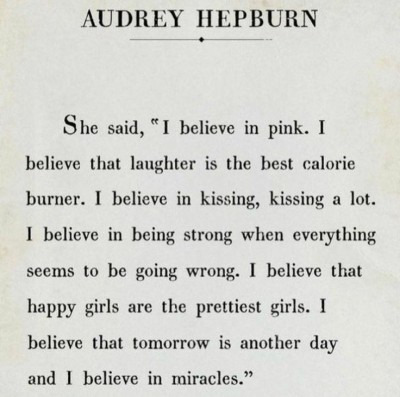


pile 1
I feel like for most of you who picked this pile this person is of Asian descent. Keep in mind that Asia is a big country with many countries and ethnic groups, so I will try to break it down more.
I do feel like for some of you who chose this pile, your future spouse might be of korean origin, but I feel like they will be half white and/or live in the west, like Europe or North America. This message seems to be more true for those of you who have strong scorpio, aquarius and possibly aries influences in your chart. If your name starts with C, E or P or has a more vintage vibe to it, it can still be for you.
For another group who chose this pile, I'm sensing someone of indian origin, I'm getting they could be kashmir and, for some of you, even telugu as well. This feels especially true for those of you that have a strong sagittarius or leo influence in your charts or if your name starts by A, L or U.
I am getting for a minority of people who chose this pile, your fs might be of levantine origin, mainly lebanese and/or palestinian, living most likely in Lebanon, for some of you, or in Southern Europe as of now. I feel like this message is especially true for those of you with strong scorpio, taurus or libra placements. Especially those who get M, S or V as first names.

pile 2
For this pile, I'm specifically getting southeast asian, most likely indonesian and/or malay. I feel like they might be living in Singapore right now. If you are a capricorn, a virgo or a cancer or have strong influences from these signs, this might be the ethnicity of your fs.
I'm getting potentially someone is of sub-saharian african descent mixed with european for some people who picked this pile. I'm getting this person might have ancestors from different parts of Africa and Europe and I'm getting difficulty pinpointing some exact places. I feel like for some of you, they might be west african and partially british. For others, this person could be afrolatino from the caribbean. Signs for this one I'm only getting scorpio and pisces, but I'm also gettingthe initials C, M and D.
There is a smaller group of you that could have a fs from a eastern african country too, potentially Ethiopia or Somalia. I'm getting this is likely true for you especially if you always enjoyed cultures and foods from different african countries, if you like the color red or if your name starts by J, F or E. Potentially if you like orange or are a capricorn rising/sun/moon.

pile 3
I'm getting a strong european influence here. I feel like this person might be italian and, for some of you, of a similar background like iberian, balkan or greek. You will meet them while on a trip to their country or city, if you are from the same country. This might resonate the most with those of you who like the color green, to wear t-shirts or whose name starts with B. If you are a cancer, leo, libra or taurus, this might also be true for you.
For others of you, I'm getting this person might be mexican, likely of a mestizo background. I feel like they might be in the US living right now, although for some it could even be Canada. This might resonate more with you if you like green vegetables like spinach or broccoli, if you like coke, if you like the colors red and pink, if you like mermaids or are of strong aquarius, aries or gemini.
For some of you, although a larger minority, your fs might also be argentinian or brazillian. This can be true especially if you like soccer (I think this one are my guides joking), cinema, romance movies/books, the color white and pink, lana del rey. Alternatively, if your name starts by N, A or Z and your signs are leo, virgo or cancer.

#pac#pick a card#pick a pile#fs pac#fs pac reading#fs pick a card#future spouse readings#future spouse pac#future spouse pick a card#free readings#intuitive readings#tarot readings#love readings#love pac readings#free intuitive readings#free tarot readings
834 notes
·
View notes
Text
Didn't wanna clog up your post, and these sources are more about relationships of time with space/place, but here's some stuff that I've encountered:

---
“Temporal sovereignty”. Contemporary US/Australian claims over time-keeping. Reclaiming agency by operating on Indigenous/alternative time schedules. The importance of the “time revolution” in the Victorian era to Euro-American understandings of geology and deep past, precipitating nineteenth-century conquest of time. Mid-twentieth century understanding of “deep time” and its co-option by the Australian state. "Deep time dreaming".
Laura Rademaker. “60,000 Years is not forever: ‘time revolutions’ and Indigenous pasts.” Postcolonial Studies. September 2021.
---
How "time is a form of enclosure". Checkpoints, "baroque processes to apply for permits to travel", fences, incapacity to change residences, and other "debilitating infrastructures" work to "turn able bodies into a range of disabled bodies" by "stretching time". This is a "slow death" and a simultaneous "slowing down of life" because "it takes so long to get anywhere" and "movement is suffocated". Thus "time itself is held hostage". This "suspended state" of anxiety and endless wait-times "wreaks multigenerational psychological and physical havoc". "Checkpoints ensure one is never sure of reaching work on time. Fear of not getting to work then adds to the labor of getting to work [...]. Bodies in line at checkpoints [...] [experience] the fractalizing of the emotive, cognitive, physiological capacities" through a "constant state of uncertainty". "The cordoning of time through space contributes to an overall 'lack of jurisdiction over the functions of one's own senses' [...] endemic to the operation of colonial rule". This "extraction of time" produces a "depleted" and tired person "beholden to the logistics" of administrative apparatuses, community suffers and "communing is thrawted".
Jabir K. Puar. "Spatial debilities: Slow Life and Carceral Capitalism [...]." South Atlantic Quarterly 120. April 2021.
---
The "apocalyptic temporality" that presumes extinction. Indigenous Polynesian/Pacific perceptions and ways of being "destabilize the colonial present" and also "transfigure the past" by "contesting linear and teleological Western time". Indigenous "ontologies of cyclical temporality or inhabitation of heterogenous time". How United States and Europe colonized Oceania for weapons testing and conquest of tropical Edens while rendering local Indigenous people "ungrievable" and "without future". "Pacific time is a layering of oral and somatic memory". Instead of accepting an apocalyptic future or doomsday or nightmare, assert the possibility of a livable future, in spite of "Western temporal closures".
Rebecca Oh. “Making Time: Pacific Futures in Kiribati’s Migration with Dignity, Kathy Jetnil-Kijiner’s Iep Jaltok, and Keri Hume’s Stonefish.” MFS Modern Fiction Studies. Winter 2020.
---
Colonial "space-time homogenization". The experience of "homogenous, empty time". Orientalist "time lag" and the naturalization of a supposed East-West hemispheric divide. Late Victorian imperial conceptions of temporality. The British establishment of the Greenwich meridian and International Date Line. The influence of British imperial seafaring and cartography on the establishment of time and on European/US feelings towards the Pacific Ocean. How the origin of English science fiction literature, space travel aspirations, and time travel narratives coincided with the Yellow Peril and xenophobia targeting East Asia.
Timothy J. Yamamura. "Fictions of Science, American Orientalism, and the Alien/Asian of Percival Lowell". Dis-Orienting Planets: Racial Representation of Asia in Science Fiction. 2017.
---
Imprisonment as time-control. Here “the question of the past the present and the future indeed time itself looms” especially around the prisoner. “The law renders punishment in units of time”, taking away a the right to a future. There are alternative worlds, many of them, which have been practiced and brought into being, which colonization tried to obscure. There is “a whole anthropology of people without future embedded in the assumptions that justify mass imprisonment as poverty management”. "The prison’s logic exterminates time as we know it”. In prison, bodies have been alienated from time and history ... the punishment seems endless ... to “achieve a measure of agency and possibility it is necessary to redeem time”, to refuse the doom, fated to a life of abandonment.
Avery Gordon. “Some Thoughts on Haunting and Futurity.” borderlands. 2011.
---
Bursting the Limits of Time: The Reconstruction of Geohistory in the Age of Revolution (Martin J.S. Rudwick, 2010) explores how the advent of European sciences like geology, preceding the "time revolution" when Europeans experienced revelations about the scale of "deep time", happened alongside and after the Haitian Revolution and other abolitionist movements. French, German, and British naturalists translated the explosion of "new" scientific knowledge from the colonies, so that the metropolitan European audience became a market for historical and scientific "narratives" about how "nature" and time functioned.
---
Prartik Chakrabarti's writing on time, temporality, and "the deep past" as British imperial concepts built in conversation with colonial encounters with South Asia. (British Empire reaching such heights in the middle of the nineteenth century at the same time that the newly professionalized sciences of geology were providing revelations about the previously unknown vast scale of "deep time". New colonial anthropology/ethnology also presumed to connect this "primitive" past with "primitive" people.)
See Chakrabarti's "Gondwana and the Politics of Deep Past". Past & Present. 2019.
---
We must witness and consider "multiple space-times" to understand how "unfree labour" of plantations was "foundational" to contemporary work, movement, subjugation, health, etc. We must "trace the geneaology of contemporary sovereign institutions of terror, discipline and segregation" [workplaces, imperial/colonial nations, factories, mines, etc.] back in time to plantations. How "the [plantation] estate hierarchy survives in post-plantation" times and places, with the plantation "being a major blueprint of socialization into [contemporary] work". The plantation was "a laboratory for [...] migration regulation in subsequent epochs" that practiced methods of racializing and criminalizing.
Irene Peano, Marta Macedo, and Colette Le Petitcorps. "Introduction: Viewing Plantations at the Intersection of Political Ecologies and Multiple Space-Times". Global Plantations in the Modern World: Sovereignties, Ecologies, Afterlives. 2023.
---
“Slow life” and the relationship between “settler colonialism, carceral capitalism, and the modulation of ... registers of time,” including “historical time, the stealing of time through the expansion of labor time, ... and the cordoning off of space through time”. For example, as in occupied zones or at border checkpoints, “the cordoning off of space through time” includes physical architecture like fences and customs, obstacles that impede movement and rhythm, so that “nothing ever happens on time” and there is “a stretching of time”. All the wasted time spent in line, showing papers, waiting for confirmation, etc. “is not a by-product of surveillance, it is the point of surveillance”. Such that “uncertainty becomes a primary affective orientation ... flesh as felt” with a racializing effect“. "This is a biopolitics conditioned through pure capacitation and its metrics”:
Jasbir Puar. In: “Mass Debilitation and Algorithmic Governance” by Ezekiel Dixon-Roman and Jasbir Puar. e-flux Journal Issue #123. December 2021.
---
"Starfish time". Indigenous Australian/Aboriginal perceptions of time and "attending to more-than-human agencies of time". Acknowledging the timescales of entire ecosystems, as part of multispecies relationships, a "transcorporeal collaboration". Cyclical time vs linear time. Contrasting timescales experienced by insects that only live a few days and creatures that live for decades. "Starfish may seem to be still" but they slowly move; "larval time" and "the time it takes for eggs to develop and hatch"'. The "immensity of the alterity is literally incomprehensible"; "we can't know what these beings know" but we "should seek respect and be aware of how our lives are entangled".
Bawaka Country including, S. Wright, S. Suchet-Pearson, K. Lloyd, L. Burarrwanga, R. Ganambarr, M. Ganambarr-Stubbs, B. Ganambarr, D. Maymuru. “Gathering of the Clouds: Attending to Indigenous understandings of time and climate through songspirals.” Geoforum. January 2020.
---
The use of calendars, dates, clocks, and industrial/corporate temporality as fundamental to the rise of plantations and financialization in United States/Europe, with a case study of the modern Colombian/Latin American state. Observance of certain dates and strict adherence to specific calendars support "mythologized deeds and heroic retellings" of colonization and industrialization. “The evolution and internalization of disciplined concepts of time” were intimately tied to the rise of wage labor in industrializing England and later during the global ascendancy of work and industrialized plantation monoculture, but the persistence of alternative time should “serve as a reminder that futures and the demarcation of epochs are never as simple as a neatly organized calendar”.
Timothy Lorek. “Keeping Time with Colombian Plantation Calendars.” Edge Effects. April 2020.
---
Indigenous people of Alaska and the US control over time management. For the past 50 years, Yupiak people have been subject to US government’s “investment in a certain way of being in time” which “standardized the clock” and disrupted human relationships with salmon. This US management model “anonymized care” and made “a way of attending to the life and death of others that strips life of the social and ecological bonds that imbue it” with resilience and meaning, which “ignores not only the temporality of Yupiaq peoples relations with fish, but also the human relations that human-fish relations make possible”. This disregards “the continuity of salmon lives but also the duration of Yupiat lifeworlds ... life is doubly negated” ... “futures depend on an orientation to salmon in the present”.
William Voinot-Baron. “Inescapable Temporalities: Chinook Salmon and the Non-Sovereignty of Co-Management in Southwest Alaska.” July 2019.
---
"Idling" and "being idle" as a form of reclaiming agency and life. Case studies of fugitive Blackness in Caribbean plantation societies. “Disruptive waiting”. “The maroon’s relationship to time challenges [both] the totalizing time of the modern state, but also the [...] narratives to negotiate struggle in the [...] present" in "antagonistic relationship with colonial power". Defying the “European narrative of modernity”. Refusing to be productive.
Amanda Lagji. “Marooned time: disruptive waiting and idleness in Carpentier and Coetzee.” Safundi: The Journal of South African and American Studies. March 2018.
---
Indigenous futures. "It is important to remember that some futures never went anywhere" and "yet they survive. These are futures suppressed and cancelled by colonial power." These are "parallel futures". "Colonial power must control the past so as to deny the emergence of" an alternative future; "colonial power creates a future in advance so that no others will take its place". Poor, racialized, Black, Indigenous people manifest alternative futures.
Pedro Neves Marques. "Parallel Futures: One or Many Dystopias?" e-flux. April 2019.
---
The "legacy of slavery and the labor of the unfree shape and are part of the environment we inhabit". The "idea of the plantation is migratory" and it lives on "as the persistent blueprint of our contemporary spatial troubles", so we must seek out "secretive histories" that no longer "rehearse lifelessness".
Katherine McKittrick. “Plantation Futures.” Small Axe. 2013.
---
“The temporal dispossession” of Congolese people. There is an “impossibility” of “predictable time” because temporal dispossession “disrupts the possibility of building a future”. Livelihoods/income is driven by market and price fluctuations in United States and Europe tech industries, so “there is an inescapable day-to-day sense of uncertainty”. As Mbembe says, “in Africa, the spread of terror ... blows apart temporal frames”.
James H. Smith. ‘Tantalus in the Digital Age: Coltan ore, temporal dispossession, and “movement” in the Eastern Democratic Republic of the Congo.’ American Ethnologist Volume 38 Issue 1. February 2011.
---
“Slow death”. Chronic illness not just as a byproduct of colonialism/dispossession, but also as part of its aim, a weapon that debilitates people, who become exhausted. Dooming poor and racialized people to lives “without future” through debility, “a condition of being worn out”. Relationship of illness, lack of healthcare, and debt as functionally incapacitating, a form of death sentence. A “zone of temporality” unfolding unlike abrupt/sudden traumatic events and becoming an inescapable condition.
Jasbir K. Puar. The Right to Maim: Debility, Capacity, Disability. 2017.
---
The extension of poverty, landlessness, homeless, and imprisonment. "To be unable to transcend the horror of such a world order is what hell means", and "without a glimpse of an elsewhere or otherwise, we are living in hell". The utopian is not only or merely a “fantasy of” and for “the future collectivity” but can be claimed and built and lived here, now. There is "no guarantee" of “coming millenniums or historically inevitable socialisms”, no guarantee that “the time is right” one day if we wait just long enough. Instead: "can a past that the present has not yet caught up with be summoned to haunt the present as an alternative?" The "utopian margins", an alternate world crossing time and place, an "imaginative space and temporality to trace the remains of what "was almost or not quite, of the future yet to come", living as if it were the present. Colonialism tried to crush the many headed hydra of the revolutionary Atlantic, those who challenged the making of the modern world system.
Avery F. Gordon. As interviewed by Brenna Bhandar and Rafeef Ziadah. “Revolutionary Feminisms: Avery F. Gordon.” As transcribed and published online in the Blog section of Verso Books. 2 September 2020. And: Avery Gordon. “Some thoughts on the Utopian.” 2016.
---
The US/European "city is the site of regulatory regimes" that try to impose a definitive narrative about history, progress, and possible futures. But it cannot achieve "a wholly Apollonian, seamlessly regulated realm" because the land "continues to be haunted by the neglected, the disposed of, the repressed". The "commodification" of landscapes "circulates an imaginary geography" mediated through advertisements, labels, soap operas, television, etc. which celebrate "sanctioned narratives and institutionalized rhetoric". A "wild zone" of informal spaces, debris. "Ruins are places where the things, people, and "other memories can be articulated". There is "a spectral residue" that "haunts dominant ways of seeing and being". "Alternative stories might be assembled", so that we can respect the people banished to abandonment, the periphery, and reclaim agency.
Tim Edensor. “The ghosts of industrial ruins: ordering and disordering memory in excessive space.” Environment and Planning D: Society and Space volume 23. 2005.
Also, how "master narratives of history as progress decompose" when faced with "a continuously remembered past" when "the ghosts of this past rear up in the ruin" to expose "the debris of unprecedented material destruction" of colonialism/empire-building. These "hauntings rupture linear temporality" and recall those people beaten down as "the trash of history". It is "essential to see the things and the people [...] banished to the periphery [...]."
Tim Edensor. "Haunting in the ruins: matter and immateriality". Space and Culture Issue 11. 2002.
---
"Many kinds of time" of bacteria, fungi, algae, humans, and "Western colonialism meet on the gravestones". Some creatures, like lichen, are very long-lived and "these temporal feats alert us that modernity is not the only kind of time, and that our metronomic synchrony is not the only time that matters". The "long duree evolutionary rapprochements to the quick boom and bust of investment capital" where "minor forms of space and time merge with great ones". Extinction is "a breakdown of coordinations with reverberating effects". Ghosts remind us that we live in an impossible present, a time of rupture. "Deep histories tumble in unruly graves that are bulldozed into gardens of Progress". "Endings come with the death of a leaf, the death of a city, the death of a friendship".
Elaine Gan, Anna Tsing, Heather Swanson, and Nils Burbandt. “Introduction: Haunted Landscapes of the Anthropocene.” Arts of Living on a Damaged Planet: Ghosts and Monsters of the Anthropocene. 2017.
---
Everywhen: Australia and the Language of Deep History. (Edited by Ann McGrath, Laura Rademaker, and Jakelin Troy. 2023.)
Chapters include: "Bugarrigarra Nyurdany, Because of the Dreaming: A Discussion of Time and Place in Yawuru Cosmology" (Sarah Yu et al.); "Songs and the Deep Present" (Linda Barwick); "Yirriyengburnama-langwa mamawura-langwa: Talking about Time in Anindilyakwa (James Bednall); "Across 'Koori Time' and Space (John Maynard)
#im sorry i guess i accidentally deleted this post so here it is again#colonial#imperial#temporality#abolition#indigenous#multispecies#ecology#temporal#futures#haunted#halloween i guess idk#ecologies#tidalectics#archipelagic thinking#caribbean#victorian and edwardian popular culture#extinction
301 notes
·
View notes
Text

As you can see I've entered my Genshin era - I wonder when it'll end
In brief, I just wanted to do some warm-up before starting a big art (I hope it'll happen one day...) and show my headcanons just for fun, why not? And ofc I do not impose anything on anyone, this is just my personal opinion and blah-blah
I find Genshin char design quite entertaining. I like the devs try to rethink and use some national stereotypes, folk costumes, some ethnic motifs etc, but absolutely the same blank faces for all characters regardless of their sex and age are just killing me. So that's why I decided to diversify it a little, to estimate possible ethnic and individual differences (yes, all the nations in Genshin are fictional etc, but in fact all the national and historical prototypes seem to be quite obvious). OK LET'S GOO
Tortellini. First of all, I'm sure freckles really suit gingers. Dimples can also add some character to the image of a naive fool and a positive dude (although Tort isn't actually stupid, he's a straightforward simpleton 'cos of his young age - this fact is stated directly in the game, e.g. in Arle's dialogues). Speaking about the general features of the face, I should note the more pronounced angles of the jaw and brow ridges, thicker eyebrows, thicker neck, slightly larger chin - features that correspond to a more realistic facial structure and the difference between a male and a female face. Regarding the nose, the situation is a bit ambiguous: on the one hand, a curved nose is usually considered more Southern European or West Asian (including Arabic and Persian regions) but I once found information about two subtypes of curved noses a long time ago. Like, if the nose is curved in the upper part closer to the bridge of the nose, then this is usually the Asian type, if it's curved in the lower part closer to the tip, then it's usually European. Considering that I've met guys on the street with the latter type of a curved nose (which is also raised up) and their appearance corresponded to the "Nordic" type (light straight hair, light eyes, pale skin of a cold shade), let's assume that this is still a Northern European nose and everything is logical
Signora. Her facial features are slightly softer. She has a usual straight narrow nose. Her appearance is close to the type of a femme fatale, she is suited by slightly defined cheekbones and plump lips (I have nothing against symmetrical round "bow" lips which are trendy today, but I just prefer classic ones with a pronounced cleavage in the middle). Her head is proudly raised. Moles can complement the image: a mole under the eye can add some sophistication and elegance, while the one above the upper lip can add a bit of sensuality (for example, look at the photo of Nika Turbina - her story raises many questions, but her appearance is definitely memorable). In other words, quoting The Twelve Chairs by Ilf and Petrov, Rosaline is "a sultry woman, a poet's dream" :)
Dottore. On the one hand, his color palette gives the impression of albinism (although albinos among humans, unlike animals, practically do not have red eyes, but let's forget about it). On the other hand, his Sumeru origin directly asks to add something appropriate, so I decided to choose a hooked nose (yes, I love noses, the most diverse and memorable part of the face). His character and his actions are conducive to introducing a bit of "monstrosity" into the image: sharp facial features and teeth, withered thin lips, a greenish tint in the palette. Well, it turns out he's a true gremlin. I like the widespread headcanon about him having scars, why not - in general, the guy could both earn one in the process of experiments and receive it from his fellow countrymen. I decided to make him stoop a little, but this is a dangerous move. I mean the Doctor is bursting with aggression, determination and arrogance, he is a daring and self-confident person, and such a tightness doesn't fit him. However, his obsession with scientific research, poring over books and constant work on experiments can (probably) cause a curvature of posture. In the end, I decided that this man can straighten up normally if necessary, but he usually still slouches (just like my uncle :)). Or at least like Dead Space protagonist who is also stooped but still is quite a good fighter
Arlele. Here I didn't do much 'cos the developers have already given her a bunch of distinct features: crossed pupils, and black hands, and some patterns on them, and contrasting hair (although most chars have more or less monochrome or at least similar shades of their hair). In general, she's good the same as she is now. In comparison with Signora, her image is slightly more restrained and refined, her lips are slightly thinner, her eyebrows, on the contrary, are slightly thicker, and her cheekbones are less pronounced. The only major detail added is a slightly hooked, drooping nose. I don't know why, but it seems to be very French for me. Some famous French actors and actresses have kinda similar noses (e.g. Louis de Funès, Pierre Richard, Christian Clavier, Sophie Marceau, Laetitia Casta etc.) - well, at least I think so
By the way, I honestly wanted to diversify somehow emotions in my drawings, but all of the characters are smiling again - what can I do if the smiles suit these guys as well as nobody else: Tort has a half-friendly, half-self-confident smile kinda like 😼, Signora has a proud one, Arle has a cunningly condescending one, and Dottore has just a snide "ehehe"
Hooray, it's a Chinese wall of my text again - well, this time it has at least some sense
Have a nice summer everyone!! I hope to see you again before the autumn :)
P.S. hello to the old ones who has recognized the original album cover, it's been 19 years since its release, feel old yet?
45 notes
·
View notes
Text
One thing that personally bugs me about certain fan interpretations wrt Almyra and 3H world beyond Fódlan: I think some fall into the trap of making Fódlan way more important than it actually needs to be/is implied by the game to be.
Such as, by connecting a bunch of other things in the world, including negative things, all back to Fódlan. Or for more specific examples, claiming Almyra/Almyrans as a whole (not just Almyrans in Fódlan or Almyrans who live near the border) are oppressed or victimized by Fódlan, in an overcompensating inversion of the "Almyrans are barbarians victimizing Fódlan" thing Fódlanis espouse in-game.
But the thing is, Claude already alludes to stuff in Fódlan being kinda insignificant relative to rest of the world in his support with Leonie:
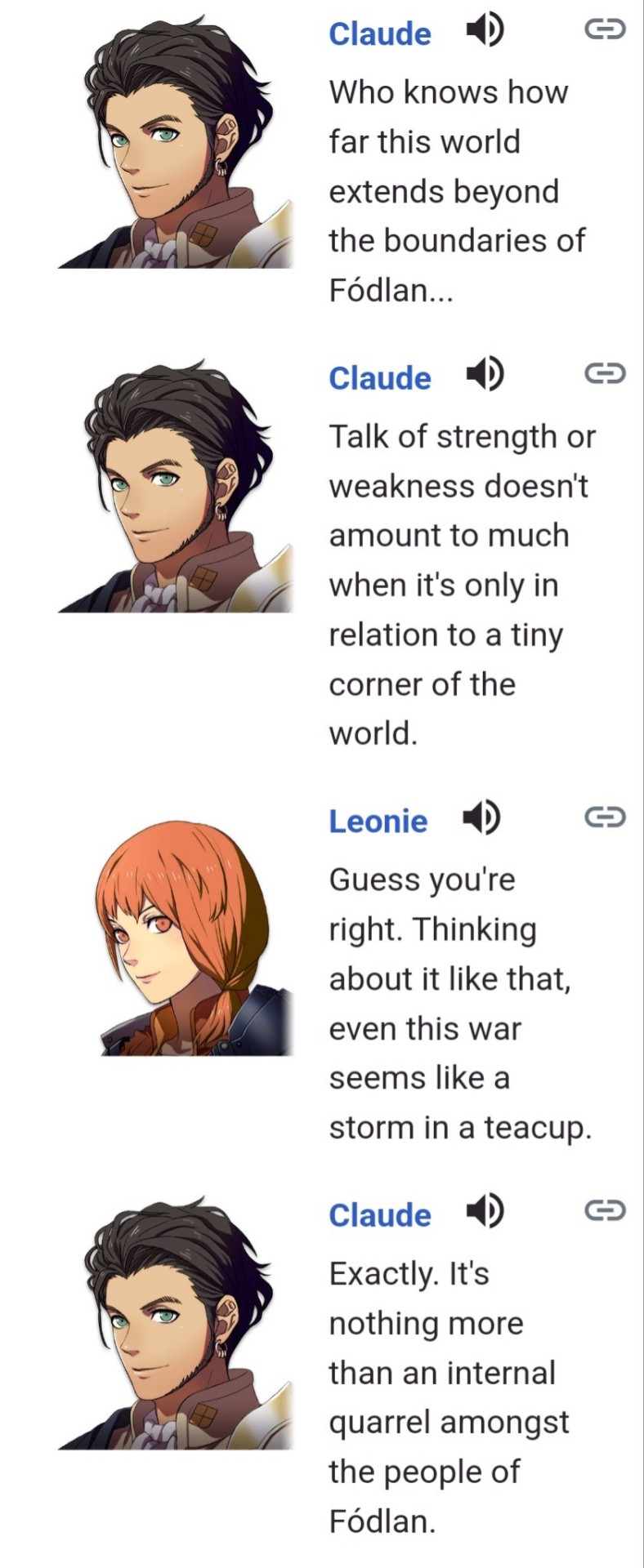
and Almyra appears to be based off of Persian Empire and/or various other West and Central Asian empires; those empires were, historically, pretty damn strong, and the superpowers of their time.
Meanwhile, not only is Fódlan based on Europe in an era before their global dominance, it appears to be very long ways from being able to even attempt that in-universe due to factors like the isolationism/technological stagnancy. So I'd argue that it really doesn't make sense for canon-era Fódlan to have caused the types of problems colonialist Europe does/did in real life, or for the power dynamics between Fódlan and Almyra(/other lands) to be anything like their approximate real-life equivalents in recent history. And yeah Fódlan does bully Brigid/Duscur/Sreng, but this is the kind of bullying and subjugation you can see anywhere in the world at any point in time, not just in a world during and after European colonialism.
Plus nothing says that the historical development of 3H world post-canon has to resemble ours in any way— and I'd argue that things have already diverged significantly in the 3H world. Dagda, which appears to be the approximate equivalent of Americas, apparently knew of Fódlan much earlier than the irl equivalent (probably due to Elites fleeing there, Brigid, etc) and even invaded them a few times. Fódlanis did try a counter invasion on Dagda in the 700s, but again, this pretty explicitly failed, and as far as we can tell, they haven't tried it again since. (They just settled for beating up the nearby Brigid because it's the easy target rip)
But anyway, back to Almyra. While the Almyran playable characters we see in the game are affected by the Fódlan-Almyra border issues, they're probably the exceptions, not the norm. Whole reason Cyril got caught up is because he was originally from a border village, aka the periphery/fringe. Claude is a mixed kid. That's why it affects them, but for the vast majority of Almyrans who probably aren't in such circumstances… why would they care? Even if they're aware of it, there's a good chance there are many other problems that have nothing to do with Fódlan that they consider to be of equal or higher priority.
As for Almyran NPCs: Nader probably only cares about Fódlan due to his relationship with the king and queen and Claude, and Shahid appears to see Fódlan as a cheap punching bag for fast military/political valor (plus some personal shit related to Claude) which is literally the opposite of considering them a significant player in any way. Granted Shahid is arrogant and dumb but still, if Fódlan was considered a serious concern/threat on a general nationwide level, I'd think others in Almyra would have stepped up before this stupid prince dragged an army over. Like man the Almyran government really does not care what goes on at the Fódlan-Almyra border lol. If they did Cyril wouldn't be in the situation he's in (as he points out himself).
We do read about the invasion at Fódlan's Throat in the 900s, but because we only get records from the Fódlani POV, there's no way to tell how serious the Almyrans were about it, how significant their losses were by their own standards, how the failure of that specific invasion affected their assessment of Fódlan, etc. But considering the Almyrans still go raiding at the border at the time of canon for shits and giggles... I'm guessing they still do not see Fódlan as a significant threat. (And I'd say they're right to, if you look at wtf is going on in Fódlan during canon)
Combine this with, again, their real-life motifs and other tidbits in-game (apparently Almyra has the budget to just send over fleets to Leicester at the drop of hat), I think it's pretty likely that: 1. Almyra far overpowers Fódlan in most measures of national/regional power and it's not even close 2. Almyra might be pretty important to Fódlan (as a threat) but Fódlan is not that important to Almyra, and 3. in Almyra Claude (+maybe his dad?) is probably the odd one out for caring that much about Fódlan-Almyra relations.
In conclusion: Fódlan is clearly rife with problems and assholes, the game itself makes that clear. But what I think is a massive stretch is canon-era Fódlan being the most important place in the 3H world, including in negative ways, where they're responsible for problems in places we canonically have no evidence of them having significant influence in. Imo that's both contrary to what the game wants to say and makes the 3H world/setting less compelling; I think the sense that other lands have their own problems and agendas independent of the place that's the main focus is part of what makes this world feel grounded and rife for exploration, and it's a disservice to discard all that in favor of making everything revolve around Fódlan.
#fe3h#fire emblem three houses#slotalks#fe3h meta#meta#fe3h worldbuilding#claude von riegan#cyril#cyril fire emblem#almyra#fódlan#dagda#sreng#brigid
40 notes
·
View notes
Note
there was Chinese interest in the Out Of Asia theory, in both the Republic, Chiang Republic and People’s Republic periods before the Out Of Africa theory became commonly accepted. Was the 1954 Yeti expedition done just from the Nepalese-Indian side or were the American agents and “anthropologists” given access on the Sino-Tibetan side of the Himalayan border?
During the early part of this century, it was absolutely believed for a long time that the deserts of Western China were the most likely place of human origins, as seen in this migration map from 1944, made from the best available knowledge of the time:
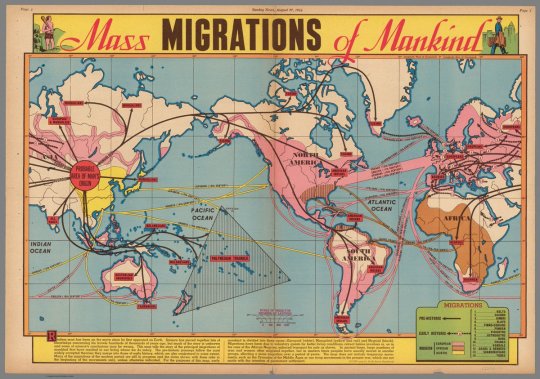
Remember, the oldest fossil remains at this point were in China, where Homo erectus was discovered (originally known by his initial place of discovery in Chungkotien Cave, nicknamed "Peking Man"). The discovery of Australopithecus and Homo habilis in Olduvai Gorge and South Africa, which place human origins in Africa, were not until the 50s and 60s, so it seemed entirely reasonable that Homo sapiens evolved in Western China.
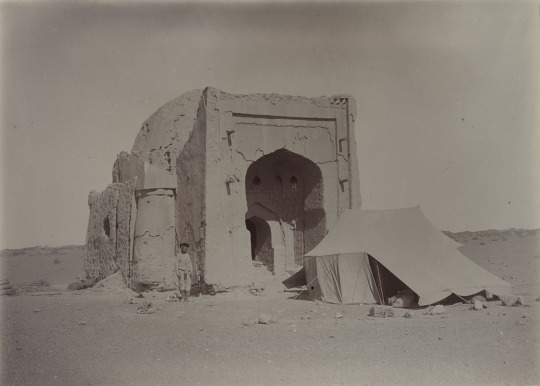
The idea that China's desert regions were the origin of modern humans and culture is seen a lot in pop culture from 1900-1950, mainly because there were tremendous explorations in the region, especially Aurel Stein's expedition of 1908, who ventured into the Taklamakan Desert to find the Dunhuang Caves and Khara-Khoto, a city destroyed completely by Genghis Khan and vanished in the desert.
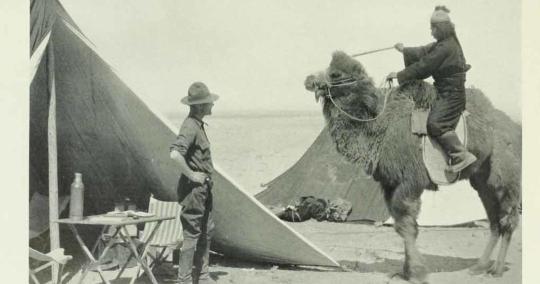
If you've ever heard of Roy Chapman Andrews and his famous expeditions in the 1920s, it's worth noting that he ventured into the Gobi Desert looking for human remains....not dinosaurs, and the discovery of dinosaur eggs was an unexpected surprise.
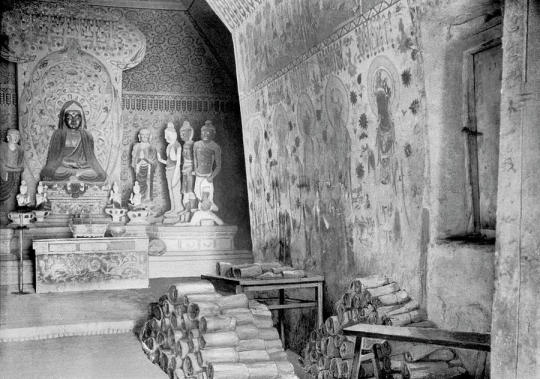
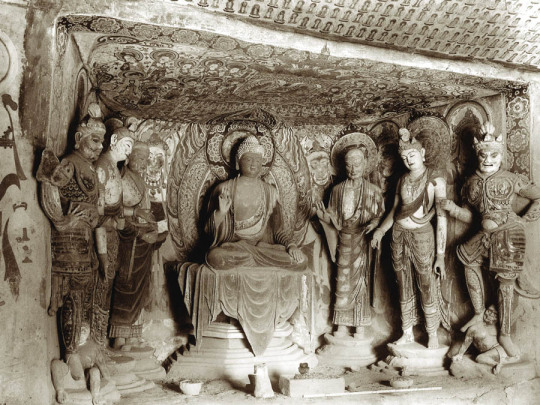
For that reason, there was a short lived Silk Road Mania that seemed to be a smaller scale predecessor to the pop culture dominating Egyptomania of the 1920s. It's bizarre to read adventure and fantasy fiction of the 1910s-1920s that features mentions of Silk Road peoples like the Kyrgyz, Sogdians, Tajik, Uigurians, and Tuvans. The best example I can think of would be the Khlit the Kossack stories of Harold Lamb (who also wrote a biography of Tamerlane), which together with Tarzan and Tros of Samothrace, formed the core inspiration for Robert E. Howard's Conan the Barbarian.
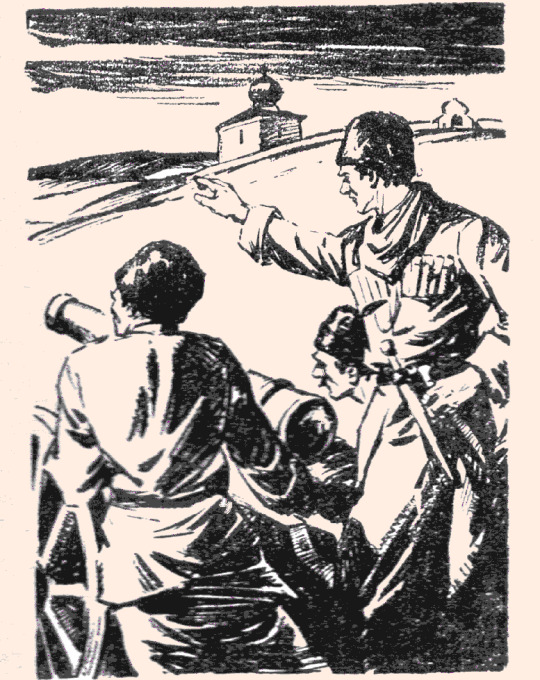
The most interesting example of this would be A. Merritt's Dwellers in the Mirage, which featured a lost city in Xinjiang that was the home of the Nordic race, who worshipped their original religion, the kraken-like squid devil god Khalkru. It was widely believed in this era that Nordics emerged from Central Asia originally, and while it's easy to write this off as turn of the century racialist claptrap pseudohistory (along with Hyperborea legends), in this case, it is actually true: a branch of the Indo-European family lived in West China, and 5,000 year old redheaded mummies have been found in the region. As usual, A. Merritt was right on the money with his archeology, more so than other 1920s authors. After all, his "Moon Pool" was set around the just discovered ruins of Nan Madol, the Venice of Micronesia.

Jack Williamson's still chilling Darker Than You Think in 1948 was also set in the Silk Road/Central Asian region, as the place the race of shapeshifters emerged from, Homo magi, who await the coming of their evil messiah, the Night King, who will give them power over the human race.
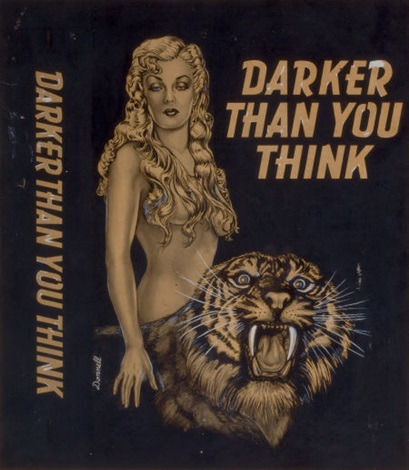
H. Rider Haggard set "Ayesha: the Return of She" (1905) in Xinjiang, among a lost Greek colony in Central Asia (no doubt based on Alexandria on the Indus, a Greek colony in modern Pakistan that was the furthest bastion of Greek Culture). This was also two years after the Younghusband Thibetan Expedition of 1903, where the British invaded Tibet. At the time, the Qing Dynasty was completely declining and lost control of the frontier regions, and the power vacuum was filled by religious authority by default (this is something you also saw in Xinjiang, where for example, the leader of the city was the Imam of Kashgar).
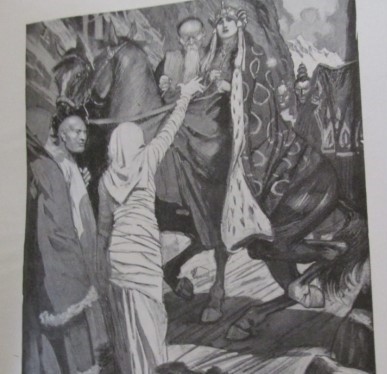
This is one of the many British invasions they have attempted to cram down the memory hole, but if you ever see a Himalayan art piece that was "obtained in 1903-1904" ....well, you know where it came from.
Incidentally, there's one really funny recent conspiracy theory about paleontology, fossils, and China that I find incredibly interesting: the idea that dinosaurs having feathers is a lie and a sinister plot spread by the Communist Chinese (who else?) to make American youth into sissy fancylads, like Jessie "the Body" Ventura. How? By lying to us and making up that the manly and vigorous Tyrannosaurus, a beast with off the charts heterosexuality and a model for boys everywhere, might have been feathered like a debutante's dress. What next - lipstick on a Great White Shark? The long term goal is to make Americans effeminate C. Nelson Reilly types unable to defend against invasion. This is a theory that is getting steam among the kind of people who used to read Soldier of Fortune magazine, and among abusive stepfathers the world over.

...okay, are you done laughing? Yeah, this is obvious crackpottery and transparent sexual pathology, on the level of the John Birch Society in the 60s saying the Beatles were a Communist mind control plot. Mostly because animals just look how they look, and if it turned out that the ferocious Tyrannosaurus had feathers and looked like a fancylad Jessie Ventura to you, well, that's your problem and mental baggage, really.
I was left scratching my head over this one. But there is (kind of) something to this, and that is that a huge chunk of recent dinosaur discoveries have been in China. I don't think it has anything to do with a Communist plot to turn American boys into fancylads, but more to do with a major push in internal public investment in sciences in that country, and an explosion of Chinese dinosaur discoveries. If you want to see a great undervisited dinosaur museum, go to the Zigong Dinosaur Museum in Sichuan.

Pop quiz: what living scientist has named more dinosaur discoveries? It's not Bakker or Horner. The greatest living paleontologist, Xu Xing, which is why a lot of recently found dinosaurs are named things like Shangtungasaurus.
250 notes
·
View notes
Text
Please note that the families listed here were chosen purely by number of speakers, as those would be the most likely to be spoken. There are still MANY more language families not listed
Some of these have over a thousand languages so I cant list all of them, but I'll list a few languages from each family and the generam geography of it under the cut
Austronesian
Languages spoken mostly in Southeast Asian archipeligos including Indonesian, Malay, Javanese (NOT Japanese), and Tagalog, among others
Sino-Tibetian
Languages spoken mostly arround East and Southeast Asia along with some parts of Central Asia including Chinese (all dialects), Burmese, Tibetic languages, and Nepali, among others
Indo-European
Languages spoken mostly around Europe and South-Southwest Asia including English, all romance languages, Greek, Albanian, German, Hindi, Bengali, and Sanskrit, among others
Afro-Asiatic
Languages spoken mostly around Northern ans Northeaster Africa, and West Asia including Egyptian, Hebrew, Arabic, Amharic, and Hausa, among others
Fun fact! When counted as a single language, Arabic alone is spoken by over half of the native speakers of Afro-Asiatic languages
Atlantic-Congo
Languages spanning most of Africa exclusing Northern parts including Fula, Wolof, Swahilli, Kirundi, Luhya, Makua, Xhosa, and Shona languages, among others
Fun fact! This family has the most languages of any language family at 1,453 total!
Dravidian
Languages spoken mostly in souther India, along with surrounding countries, including Telugu, Tamil, Kannada, Malayalam, and Brahui, among others
Turkic
Languages spoken in many countries throughout (mostly central/centeal western) Asia and Eastern Europe including Turkish, Azerbaijani, Uzbek, Uyghur, and Kazakh, among others
Fun fact! While we mostly think of Turkic languahes being from Eastern Europe and Central Asia, Proto-Turkic actually originates from East Asia around China and Mongolia! It's seldom spoken there anymore
Japonic
Languages spoken mostly in Japan (Note: NOT including the Ainu languages) including Japanese, Ryukyuan, and Hachijō, among others
Fun fact! Japanese was considered an isolate language (a language with no other languages in its family) until the Ryukyuan languages joined it in the Japonic family.
It also has the lowest number of languages of the ones listed, with 13 languages.
Should Koreanic have made it onto the list (It was JUST bekow Kra-Dai for # of speakers), that would be the lowest with only 2 languages!
Austroasiatic
Languages spoken mostly around South through East Asia Including Vietnamese, Khmer, Tagalog, among others
Fun fact! Two-thirds of people who speak an Austroasiatic language speak Vietnamese
Kra-Dai
Languages spoken mostly in Southeast Asia and Southern China including Thai, Lao, Bê, among others
#I spent an unreasonable amount of time on this#I KNOWWWW this poll is gonna be dominayed bt indo-european but
49 notes
·
View notes
Text
RE: the Anon about bad Greek representation in the game Hades 2
Hello, I answered your ask last night however I was soon notified that the link you added came from a YouTuber who, apart from the incidental valid points made in this particular video, has altogether different motives and beliefs than the ones I wish this blog to be associated with. So I deleted the ask with the link but I am giving you my original answer regarding problematic Greek representation intact. Besides, this video does not analyze why such representation in the context of Greek mythology and identity is questionable but rather disregards diversity in media just for the sake of it. So any person interested in Greek matters won’t learn much from watching it.
Like I said the basis of his points in this video makes sense. However, I don't know, I feel like all this discourse regarding the poor, agenda driven Greek representation and the appropriation of the mythology drains me and for no good reason.
Unfortunately, I have realised that the people who support such questionable treatment of the Greek cultural heritage among other things, supposedly for the sake of the greater good of inclusivity and diversity, are absolutely not open to feedback and other opinions and appear unable to entertain the possibility that they have chosen toxic, problematic and - above all - counterproductive ways to support those very important values. The same exact thing is happening with companies - say Netflix and Disney - which are left scratching their heads about what is going wrong and all their new projects are bombing so bad. It is funny how so many people around the world consider the answer obvious but the companies are still having crisis meetings to solve the impossible challenge.
There are several reasons I do not bother much with it. First of all, all this discourse and the urgency for a diverse Dodecatheon is an exclusively American concern through and through. People from Africa, Asia and South America resolutely couldn't care less and I have read in several comments that many people feel weird about how North Americans and a few West Europeans act regarding those matters. I feel disconnected from all these people both in terms of age and interests and as a Greek I also feel entirely disconnected from all these "Greek inspired" products. We all know very well that there's nothing Greek about the Hades videogame, the LO comic, Percy Jackson, Kratos and so on. Literally nothing whatsoever.
The most annoying thing about it is that these people genuinely think they "know" Greek culture. But honestly I think at some point soon they will grow out of it. Most of them are really young and act young about it, you know? At some point the companies also will either shut down or change tactics and content. Because the "piss on" trend of course doesn't affect only the Greek culture but many other fields, i.e European history, classic literature, traditional fairytales, Norse mythology etc
Because this world operates so much on money, simply not giving something your money is your most effective way to voice your opinion. Don't pay for that movie or that game or that book. And maybe leave a review phrased in the manner of constructive criticism, not an aggressive attack, because this leaves you vulnerable in front of these ahistorical people who call every mere different perspective as "fascism" (the irony XD).
I am always far more alarmed by actual historical revisionism, especially the one that is happening around us, in places next to us, waaaay more than I care about a random teen in the other side of the globe who wants an Asian Hestia girlboss or else they can't sleep easy at night. You have to realise that such a person doesn't truly think this is how a Greek is supposed to or usually looks like. Such a person actually doesn't give a shit about the Greek look or anything Greek at all. All they care is what the videogame they play looks like and how much the designers agree with them or include features they have. The fact that the character comes from Greece is entirely irrelevant and incidental. They do not care. So I now feel it's a lost cause to even try to discuss this with them. Judging from comments I have read, they downright don't understand and they are visibly unwilling to understand what we say.
And I am always way more irritated by the double standards with which the Greek civilization is studied , the very real discriminations against Modern Greeks, the toxic levels of academic classicism, the historical appropriation in the West and in the Balkans for different reasons and above all else the amazing inability of our nation to care, address the problem and at least attempt to protect our identity with dignity and confidence. Compared to these, all the whims of fanfiction readers and videogame players just pale to me. I do react some times but it's not a regular thing.
#greece#Greek representation#Greek representation in media#Greek mythology#hades#video games#anon#ask#opinion
33 notes
·
View notes
Text
Denzel Washington being cast in Antoine Fuqua’s upcoming Netflix movie as ancient Carthaginian general Hannibal is sparking some controversy in Tunisia, the home country of the great military commander.
According to French newspaper Courrier International, there are complaints about depicting the Carthaginian general as a Black African being made in the media and the Tunisian parliament. Member of Parliament Yassine Mami has pointed out that Hannibal, who was born in 247 BC in Carthage — now known as Tunis, the Tunisian capital — was of West Asian Semitic origin. “There is a risk of falsifying history: we need to take position on this subject,” the Tunisian politician reportedly stated.
Concurrently, French-language Tunisian newspaper La Presse has published an editorial in which it similarly objects that depicting Hannibal as a Black African is “according to Tunisians and many observers, a historical error.”
However, Tunisian culture minister Hayet Ketat-Guermazi had a different, more pragmatic take on the matter.
“It’s fiction. It is their [Netflix‘s] right to do what they want,” she responded, according to French newspaper Le Monde. “Hannibal is a historical figure and we are all proud that he was Tunisian. But what can we do?” She went on to note that she is trying to negotiate with Netflix to shoot at least a portion of the film in Tunisia. “I hope they decide to shoot at least a sequence of the film here and that that this is publicized. We want Tunisia to go back to being a location where foreign films are shot,” Ketat-Guermazi said, as reported by Le Monde.
Representatives for Netflix, Washington and Fuqua did not immediately reply to a request for comment.
The controversy in Tunisia over Washington playing Hannibal is reminiscent of the uproar sparked in Egypt in April over Britain’s Adele James, who is of mixed heritage, playing Cleopatra in Netflix’s docudrama “Queen Cleopatra.” The first-century Egyptian queen was born in the Egyptian city of Alexandria in 69 BC and belonged to a Greek-speaking dynasty. Egyptian academics went on a rampage over the fact that Cleopatra was of European descent and not Black.
The still-untitled film about the Carthaginian general will be written by John Logan, the three-time Academy Award winner who scribed Martin Scorsese’s “The Aviator” and Ridley Scott’s “Gladiator.”
According to the official logline, the movie is “based on real-life warrior Hannibal, who is widely regarded as one of the greatest military commanders in history. The film covers the pivotal battles he led against the Roman Republic during the Second Punic War.”
Hannibal invaded Italy while riding a Northern African war elephant. Under his lead, the Carthaginians won key victories against the Romans, allowing Hannibal to occupy the majority of southern Italy for 15 years. Eventually, Hannibal was defeated by the Romans at the Battle of Zama after they counter-invaded North Africa.
Fuqua most recently directed Washington in the action-thriller “The Equalizer 3,” in which Washington reprised his role as ex-Marine Robert McCall.
Washington is currently involved in another war epic, the upcoming sequel to Ridley Scott’s “Gladiator,” which has resumed shooting in Malta after production was halted due to the SAG-AFTRA strike.
_______________
Netflix is at it again i see.
63 notes
·
View notes
Note
I would love to hear an extended rant about being an artist in a periphery country, if you're willing to say more.
sorry for this being late! but yes there are quite a few things to this.
1) EDUCATION/JOB OFFERINGS
when you are from a periphery country, the art education accessible to you is much worse than in the imperial core. yes, i know, you dont need to go to art school, you can be self-taught, you dont need a degree, but art school is about making potential job connections. in a country like croatia, you do not have access to those connections. you do not have ability to go out, show your portfolio, get reccommended by a professor for a listing. the education is stunted as well - the animation program here is atrocious, my building had an attic with dead pigeon corpses littering the room, there are no drawing tablets, computers are old, the building is leaking, but the lack of ability to make professional connections is the main concern.
also, your degree? people hear you got a degree from a balkans land and you are immediately less worthy in their eyes. your name, which is not anglo? crossed out, despite your skills. job offerings within your country? good luck, everyone lives in poverty, you are underpaid, and studios hiring can be named on fingers of one hand. you are left with earning online.
and you are left with earning illegally. making author contracts with pdv, taxes, etc is incredibly complicated when working over upwork, doing commissions etc. this does constitute as black market. we do not hand in our taxes like in the usa, theyre deducted from our salaries and contracts immediately. this means you are missing out on potential grants and statuses which require you to provide papers of your commissions. it also means that transfering money over paypal has to go into small amounts to your own account, to avoid suspicious activity.
2) ART TOOLS ACCESIBILITY
a thing that is very frustrating. living in a periphery country? good luck getting anything. art shops are scarce. art shops do not carry the same amounts of items, and they are more expensive than in their mother countries. you are left with office supply stores. the quality of accessible paints and other tools is lower. its already been proven that products shipped to eastern europe are of lower quality and higher price than in the west; and this goes for paints too.
this means that, if you do traditional art of any kind, you are left with shopping online. this includes shipping - youre in a periphery country? congrats, often it does not ship to it, or the shipping is atrocious. your choices? mostly deutschland amazon - every item has 10€ shipping minimum. prices are not adjusted to your salary, they are adjusted to the german ones, which are much higher. i have to regularly order fillings for my brushpen. it is not available in my country. the price on amazon is significantly higher than on pentel website, and their usa based shipping. yes, just the price of the product. pentel does not ship this to my country btw. aliexpress is what you have, it takes 2 months to arrive, is frequently lost in mail, and even with it being cheaper - its still a bit more expensive than the original.
3) ALGORITHM, SOCIAL MEDIA
this is the third thing - algorithm works against you if you are not from the imperial core. of course, there are timezones, but also - your posts tend to be shown to people who live around you; meaning you have harder time breaking into the international market, and that market is the only viable one.
4) BEING PAID LESS
being eastern european (or asian or southern american or african or...) gets you lower salary. i indeed love my employers, i adore the comic i work on so much that its become my own project as well, theyve been nothing but kind to me - but the fact remains that i, as an eastern european, am and will always be paid much less than my usamerican counterparts.
5) JOB OPPORTUNITIES, ONCE AGAIN, ENGLISH LANGUAGE
adding this but: its hard to break into cartoon network/adult swim/etc without being presently there. you cannot get to conventions, you cannot have your portfolio checked, and you must speak english. yes. anglos take english-speaking for granted, and fail to realize that actually speaking english for us is not a privilege, its a necessity, and its a tool of imperialism. it is unfair that you cannot do ANYTHING without speaking english. you cannot get jobs, you cannot advance your career, and while i personally speak english quite well, not everyone does, not everyone should have to.
anyway sorry for the length
#txt#artists on tumblr#eastern europe#imperialism#usa imperialism#marxism#marxist leninist#socialism#communism#ask
37 notes
·
View notes
Note
Hello! I wanted to ask a potentially hardish question. How do you feel about non-Romani engaging with Tarot, doing paid reads, and such? Do you think it's okay for everyone to partake in it? Would you at least want people to be more informed of its origins?
My general attitude, when it comes to anything related to magic, fortunetelling, etc, is that we should be focusing more on cultural restitution and historical authenticity than trying to make a list of who can do what. When it comes to tarot, there's a lot to learn, and a lot to unpack in both of those areas. The short answer is that I don't believe that tarot is, or should be, a closed practice. There is, however, is a deep legacy of racism in the evolution of tarot as a fixture of mainstream culture, and the fortunetelling industry is rife with Romani exploitation. I believe that understanding this, and integrating it into your actions and conduct, is key to developing an ethically and spiritually holistic practice. And I think that applies to all forms of magic and spirituality-- racism and colonialism are very common in magical spaces where historical understanding is not encouraged.
If this is something you'd like to learn more about, I would highly encourage you to pre-order Secrets of Romani Fortuntelling, which is an upcoming book written by my friend Jezmina von Thiele and their Romanistan cohost, Paulina Stevens. Preorders make a huge difference for small publishers and new authors.This book is an authentic new look at fortunetelling practices in Romani culture and I, personally, think everybody who reads tarot needs to buy a copy.
If you'd like to receive a reading from a Romani practictioner, I am running a donation drive for Palestinian families and offering online tarot readings with personalized writeups and graphics as rewards.


My understanding is that tarot, and cartomancy in general, are closely tied to Romani culture and history because they were trades that Romani families developed and practiced as a form of survival work*. The same is true for several other types of fortunetelling and folk magic practices. There is an element of cultural preservation and ancestral custom in a lot of these skills, but ultimately, this is something that was meant to be shared with non-Roma, so it's not a closed practice, in that regard. And it's worth mentioning, of course, that many of these skills and devices were adapted from existing aspects of Western culture. The original tarot deck was, after all, just a set of European playing cards.
Over the centuries, tarot has really taken on a life of its own outside of Romani society, as both a popular practice and object of cultural fascination. There are other cultures who practice divination and fortunetelling for very similar reasons, and because tarot is so universally known, it's become a tool that is shared by many, and I think it informs the way folks approach cartomancy even when they're using other devices. And I think that's really beautiful! Unfortunately, there is also a more painful part of this history that also needs to be acknowledged.
Most modern tarot decks, and much of the basis for how we read them, are the products of 19th & 20th century occult and esoteric movements in the West, which often held an Orientalist fixation on Romani, Jewish, Middle Eastern and East Asian cultures. When you look at the works of Levi, Crowley, Waite, and so forth, you'll find a lot of fabricated histories and colonial fantasies about these cultures, and that informed the symbology with which they designed the formative modern decks we know today as the Thoth and Waite-Smith tarot. In my opinion, Jewish and Romani peoples were the most heavily exploited by this movement. It just goes to show how deeply our histories a diasporic people are connected.
Here in America, many states have legislation intended to police or even outlaw the fortunetelling trade, and you will often find that these laws are based in anti-Romani racism. Furthermore police are known to profile Romani citizens and families as scammers, and a lot of the language used to describe these "scams" in both police documents and the media employs racist language and stereotypes. Despite this, non-Roma, particularly white people, are often able to turn fortunetelling into a lucrative business by using their privilege to safely navigate the legal system's impositions-- and many of these white people love nothing more than to dress up in an approximation of Romani costume in order to give themselves an exotic, mystical air-- just like Levi and Crowley before them.
So, it's my opinion that the modern fortunetelling industry and the last several generations of tarot knowledge were built, both directly and indirectly on Romani oppression. People need to understand this history, and their place in it, in order to understand how they, personally, have arrived at their own relationship with tarot. Once you do understand that, you can begin to incorporate anti-racist intention and action into your practice. If you want suggestions, providing historical acknowledgement and Romani resources to your clients is a great place to start. Being an ally and being in community with us in our fight for human rights is even better. If you own a business or a shop, you can divest yourself from problematic suppliers, or learn how to identify racist books and decks, and stop selling them. Make sure you're not exploiting or perpetuating Romani stereotypes and call other people out on it, too. And if it's possible, really reevaluate the way you have arrived at your understanding of the cards, and how you communicate with them. Look past information that has been sold to you and seek personal authenticity. You'll be a better reader for it.
*What I am describing here is not a universal experience. Some people and some families practice these trades, not all. Romani people are not a monolith, and this is not a defining aspect or Romani culture.
22 notes
·
View notes